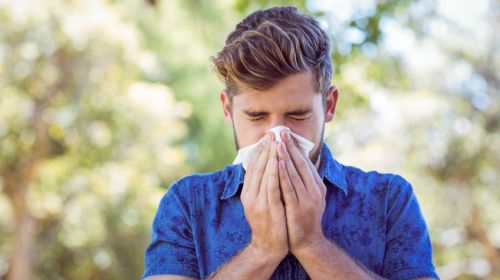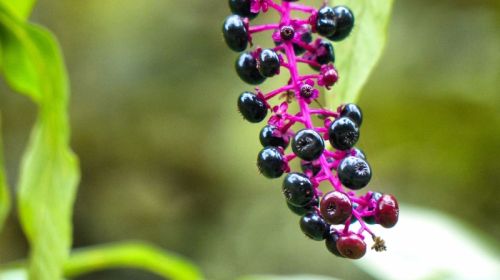The mother tincture is the basis of many homeopathic and phytotherapeutic medicines, but also acts as a potent remedy in itself. While certain medicinal substances such as Alchemilla, Calendula or Thuja can also be administered as a mother tincture, other active substances are not suitable.
- © iStock.com/terra24
Article contents at a glance:
What does mother tincture mean?
The mother tincture is the undiluted, non-potentiated form of the homeopathic remedy. Samuel Hahnemann, who founded homeopathy more than 200 years ago, initially used toxic raw materials as a mother tincture.
In order to prevent poisoning, he soon developed the method of potentization: the medicine is gradually diluted and its homeopathic effect is simultaneously strengthened (dynamization).
How can the mother tincture be made?
The mother tincture is made primarily from plant and animal raw materials, for example:
- Pressed plant juice
- fresh plants or parts of plants
- dried plants or parts of plants, sometimes ground into powder
- resins
- Animals or animal parts
- Nosodes (sterilized disease products from humans or animals, for example viruses, bacteria, diseased organs or parts of tissue)
The starting material is mixed with a carrier substance (alcohol and/or water) and filtered after a few days to weeks. This filtrate is called mother tincture.
Mother tincture as a basis for homeopathic medicines
The processes for producing homeopathic medicines that are still valid today are precisely defined in the official Homeopathic Pharmacopoeia (HAB). Particularly important: the ratio of the starting material and the carrier substance. Because it forms the basis for many homeopathic medicines, the mother tincture has retained its importance to this day.
In order to produce dilutions, globules and tablets, the raw materials used must first be brought into a soluble form.
This happens using different processes depending on the type of basic substance:
-
Trituration: Trituration is a process in which insoluble substances such as metals or minerals are broken down by intensive rubbing with milk sugar. This creates a fine powder that serves as the basis for further homeopathic preparation.
-
Solution: A different method is used to prepare soluble substances such as salts, acids and certain resins. These substances are dissolved in water, alcohol or a mixture of both. This process creates liquid solutions that can be diluted and potentiated in further steps.
-
Mother tincture: It forms the starting substance of many plant and animal homeopathic remedies. It is produced by extracting fresh plants or other raw materials in alcohol or water and is the basis for further potentizations.
Mother tincture is either potentized or used directly
The mother tincture serves as a starting material for phytotherapeutic and potentized homeopathic medicinal forms such as dilutions, tablets or globules, but is also an independent remedy. In the first case, the mother tincture is gradually diluted through potentization and dynamized through shaking, making it all the more effective on a non-material level.
“This processing is particularly necessary for plants that are highly effective and poisonous in concentrated form. For example, the particularly popular fever remedies monkshood (aconitum) and deadly nightshade (belladonna) are not suitable for taking as a mother tincture,” explains Günter Fleischmann, owner of the Bad Aibling spa pharmacy .
This is because the mother tincture has a higher content of the original active ingredient. “Mother tinctures made from poisonous plants usually cannot be used in concentrated form without causing harm,” says Fleischmann. In order to prevent side effects and significant initial aggravations, well-tolerated mother tinctures are usually used directly or, otherwise, externally. “For example, Thuja mother tincture is only used to brush on warts, but success is supported by taking Thuja D6 as an immune stimulant,” says Fleischmann.
Areas of application of selected mother tinctures
Most homeopathic mother tinctures can be taken directly without any problems. Their areas of application largely correspond to those of potentiated homeopathic medicines. According to Fleischmann, the concentrated form is used, for example, for the following active ingredients and complaints:
-
Alchemilla vulgaris (lady’s mantle): Lady’s mantle is considered a versatile remedy especially for women and is often used for menopausal symptoms. Thanks to its high tannin content, it is also a proven remedy for gastrointestinal problems.
-
Calendula (Ringelblume): Marigold is known for its excellent wound healing properties. For optimal effect, it is recommended to take it both internally and externally, such as an ointment or tincture. This combination promotes healing and protects against infections.
-
Propolis (bee resin): This protective resin from bees acts as an immune stimulant and antiseptic, especially in cases of frequent infections. For herpes, a combined internal and external application is recommended. Due to its resinous consistency, propolis is poorly soluble in water.
-
Avena sativa (Haferkraut): Oat herb has calming properties and is used as a natural nerve agent. It is particularly suitable for dealing with stress, for example when preparing for exams, and can support withdrawal from addictive substances by stabilizing the nervous system.
-
Thymus vulgaris (Thymian): Thyme is a versatile remedy, especially for respiratory illnesses such as colds and whooping cough. It has an expectorant, germicidal and calming effect. In addition, it has antiseptic and flatulence-relieving effects in the gastrointestinal tract and has a diuretic and disinfectant effect on the urinary tract.
-
Marian thistle (Mariendistel): Milk thistle is traditionally valued as a liver remedy and supports liver function. However, unlike isolated silymarin, which is used in conventional medicine for liver therapy, homeopathic milk thistle tincture also contains alcohol.
-
Aesculus hippocastanus (red chestnut): Horse chestnut is a proven remedy for venous diseases such as varicose veins, phlebitis, edema and hemorrhoids. To achieve the best effect, it should be taken internally and also applied externally to the affected areas.
Do you have a question?
Would you like information about certain symptoms of illness or would you like medical advice? Here you can ask your questions to our experts or other Lifeline users!
Source: www.lifeline.de




